Exploring the Hidden Wonders of Central Park
A Historical Journey Through New York's Urban Oasis
Once upon a time, I secured my sightseeing guide license and founded a street art walking tour company in NYC. While I may not lead tours professionally anymore, my passion for exploring and sharing the city's wonders never fades. So today, I’ll put my credentials to good use, and we’ll embark on a virtual journey through Central Park—a wonderland of history and hidden treasures.
The park's rich past could fill volumes, but I'll keep our exploration light, sprinkling our stroll with fascinating tidbits that might change how you see this iconic green space and inspire you to retrace these steps in person one day.
Lace up your virtual walking shoes, and let's explore some of my favorite spots in the southern section of Central Park.
1- The Grand Entrance
Begin your adventure at the corner of 5th Avenue and 59th Street, where the sight of horse-drawn carriages harkens back to a bygone era. In the early days of Central Park, more than half of its visitors arrived via horse and buggy. The carriages were costly, and fewer than 5% of the city’s residents could afford to own one. Since the park opened to the public in 1858, horse-drawn carriages have been available for hire. In fact, Central Park’s landscape was designed with the view from the back of a carriage in mind. As these anecdotes may indicate, Central Park began as a somewhat elitist space that had rules including “no picnicking in groups,” which kept many of the city’s immigrant populations away. Today, the cost of a carriage ride makes it a luxury experience that is (mostly) enjoyed by tourists.
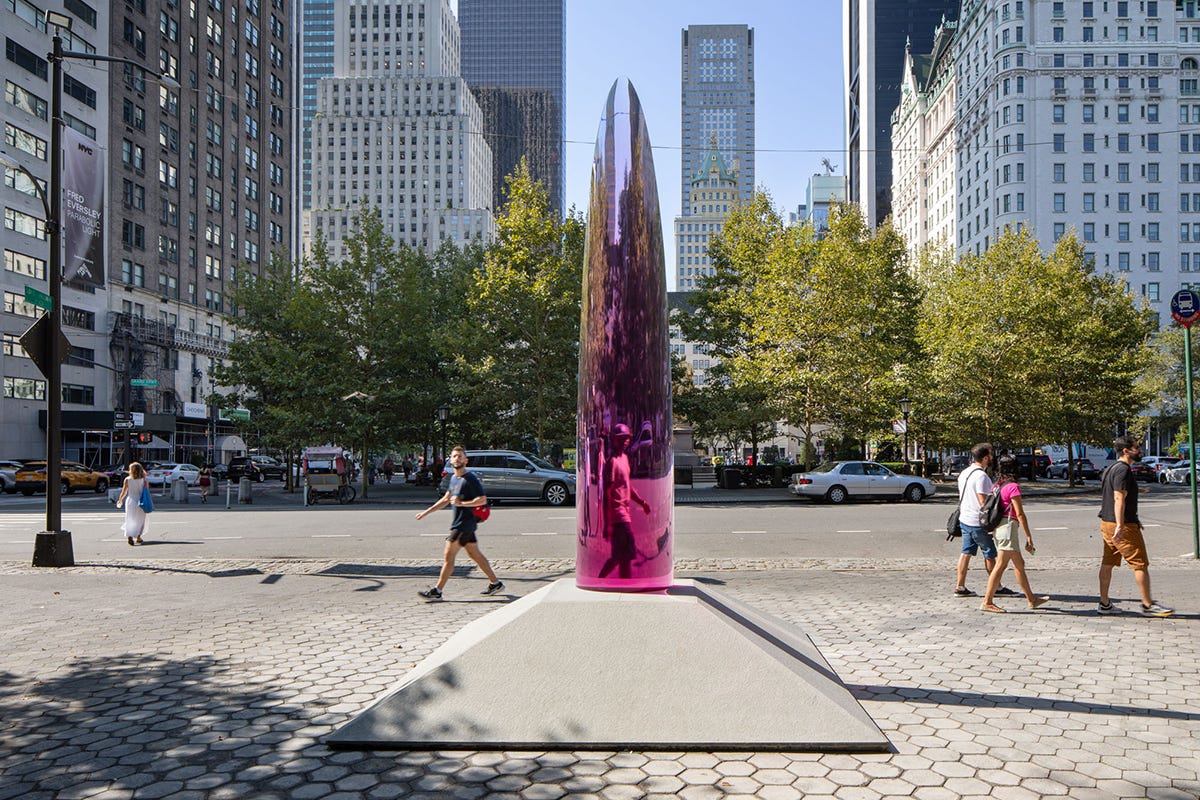
Everyone can appreciate the rotating public art installation at Doris C. Freedman Plaza, courtesy of The Public Art Fund. This corner hosts works by renowned artists like Ai Weiwei and Yayoi Kusama. Today, you’ll find Brooklyn artist Fred Eversley’s cast resin sculpture, Parabolic Light, gracing the street corner.
2- Artistic Expression
Head up the path behind the sculpture, walking north. As you do, you'll encounter a vibrant collection of street vendors offering everything from baseball caps to cut fruit to performances (tips are appreciated) to portraits. If you brought your sketchbook along, pause to draw the person you’re with or something you observe. Like photos, drawings are a great way to capture and commemorate memories.
3 - Exotic pets to sea lions.
Continue north along the path, and you’ll soon find yourself in front of the Central Park Zoo where you'll encounter a delightful surprise: the sea lion pool is visible from outside the zoo's walls. The zoo's humble beginnings trace back to the 1860s when it started as a menagerie. Local lore suggests that wealthy New Yorkers returning from exotic travels would often donate or abandon their 'souvenir' pets when they became too difficult to care for. This practice contributed to a growing collection of animals, eventually becoming the zoo we know today.
As you walk past the sea lions and before the entrance to the Children’s Zoo, you’ll pass under the Delacorte Clock. The clock was inspired by European clocks, especially Zytglogge, a whimsical clock in Bern, Switzerland. Every thirty minutes between eight in the morning and six in the evening, the clock plays a nursery rhyme as the bronze animals rotate on a track around the clock.
4- Lunch by the Sailboat Pond
Pause for a leisurely lunch at Le Pain Quotidien or pack a picnic to enjoy on one of the benches surrounding the Conservatory Water. For the first time since 2019, you can rent a wind powered sailboat ($15 for thirty minutes). It’s best to make a reservation for a time slot in advance. Rentals are available every Wednesday through Sunday from July to October.
As you continue your walk, pause to appreciate the giant Alice in Wonderland statue donated by George Delacorte and sculpted by José de Creeft. At the unveiling in 1959, his grandchildren climbed atop the statue for photos like many kids (and kids at heart) do today.
If you’re with kids, your next stop can be Billy Johnson Playground to experience the 45-foot-long granite slide that’s built into the side of a giant rock formation.
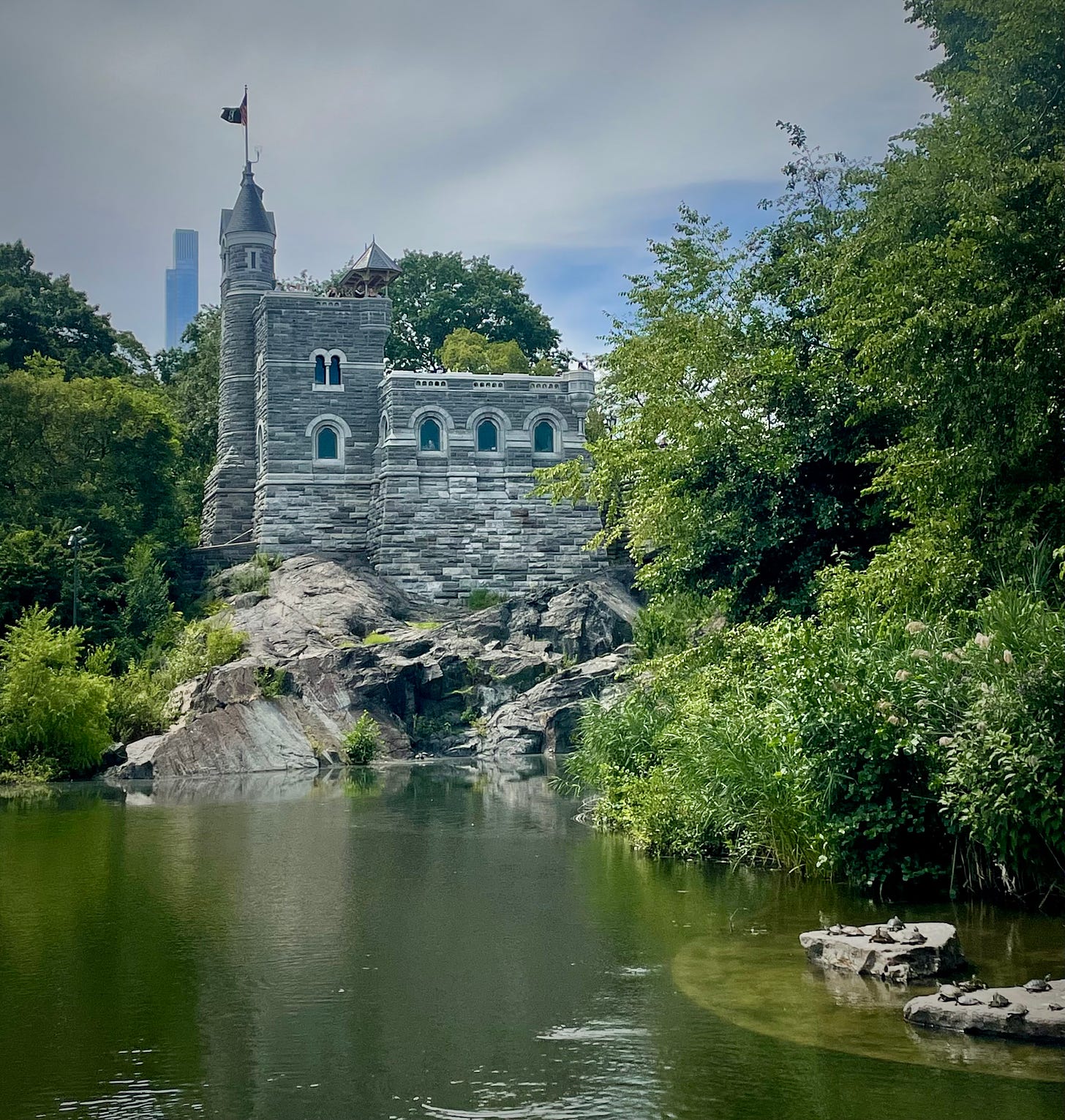
Belvedere Castle: A Fairytale in the City
Continue walking north to Belvedere Castle and climb (for free) to the top for breathtaking views over The Great Lawn. The miniature castle was designed by Calvert Vaux and Jacob Wrey Mould and built in 1869 as a "folly"—an ornamental building with no practical purpose. Today, it houses a gift shop and equipment for the National Weather Service.
Marionette Magic at the Swedish Cottage
There’s a quaint wooden cottage tucked away in Central Park. It was originally built in Sweden and brought to Philadelphia to be exhibited at the first World’s Fair in 1876 before being transported to its current location. It’s beautiful from the outside, but you won’t be disappointed spending time indoors. Catch one of their (air-conditioned) marionette puppet performances, which run Thursday through Sundays at 11 am and 1 pm. Tickets are ($15 for adults and $10 for kids) and can be reserved here.
Whispers and a Secret Cave
Steps from the theater, you’ll find the Whispering Bench, where a whisper spoken into one end of the u-shaped granite bench can be heard on the other side. Spend some time discovering the Shakespeare Garden and then make your way towards the Ramble to birdwatch and discover a secret from the park's early days: the site of the long-lost Ramble Cave, also known as the Indian Cave. The cave existed well before Central Park was conceived and is thought to have been used by early Native Americans. The entrance was sealed with cinder blocks in the 1930s due to unsavory, illicit activity that happened there.
Today, if you can find it, carefully step over the railing on the path below the Ramble Arch and walk down the steps to see the blocked-off entrance.
Row, Row, Row Your Boat
Cap off your day, as people have done for over 150 years, with a rowboat ride on one of the 100 boats available to rent on Central Park Lake. The boat dock is open from 10 am to 6:30 pm, seven days a week and costs $25 per hour. Rowing on the lake and floating under the Bow Bridge is a magical experience.
While this walk explores Central Park, similarly exciting adventures await in parks around the world. Take time to enjoy, observe, and uncover the rich history of your local green spaces—you might be surprised by what you learn.
Here’s a google map with all of the stops on this 2.3 mile walk.
Did you enjoy our virtual adventure? Will you consider visiting Central Park and following in these virtual footsteps? Please let me know if you’d like to see more content like this from me in the future by leaving a note in the comments.
Until our next adventure,
Words of the Week:
“We shall not cease from exploration, and the end of all our exploring will be to arrive where we started and know the place for the first time.” —T.S. Elliott
Photo of the Week:
Substack warned me that if I included one more photo in this week's newsletter, it would be too big for your inbox. Therefore, there's no photo of the week today. However, you can always see new pictures by following me on Instagram.
Psst... Hey, fellow Substackers! As part of our unique community, your voice holds immense power. By recommending fly Bravely, you're not just sharing a hidden gem, but also shaping the way your readers see the world. Will you take the leap and recommend Fly Bravely? Your recommendation could be the spark that ignites a new perspective. ✨


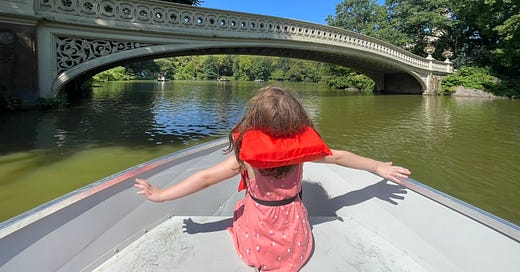


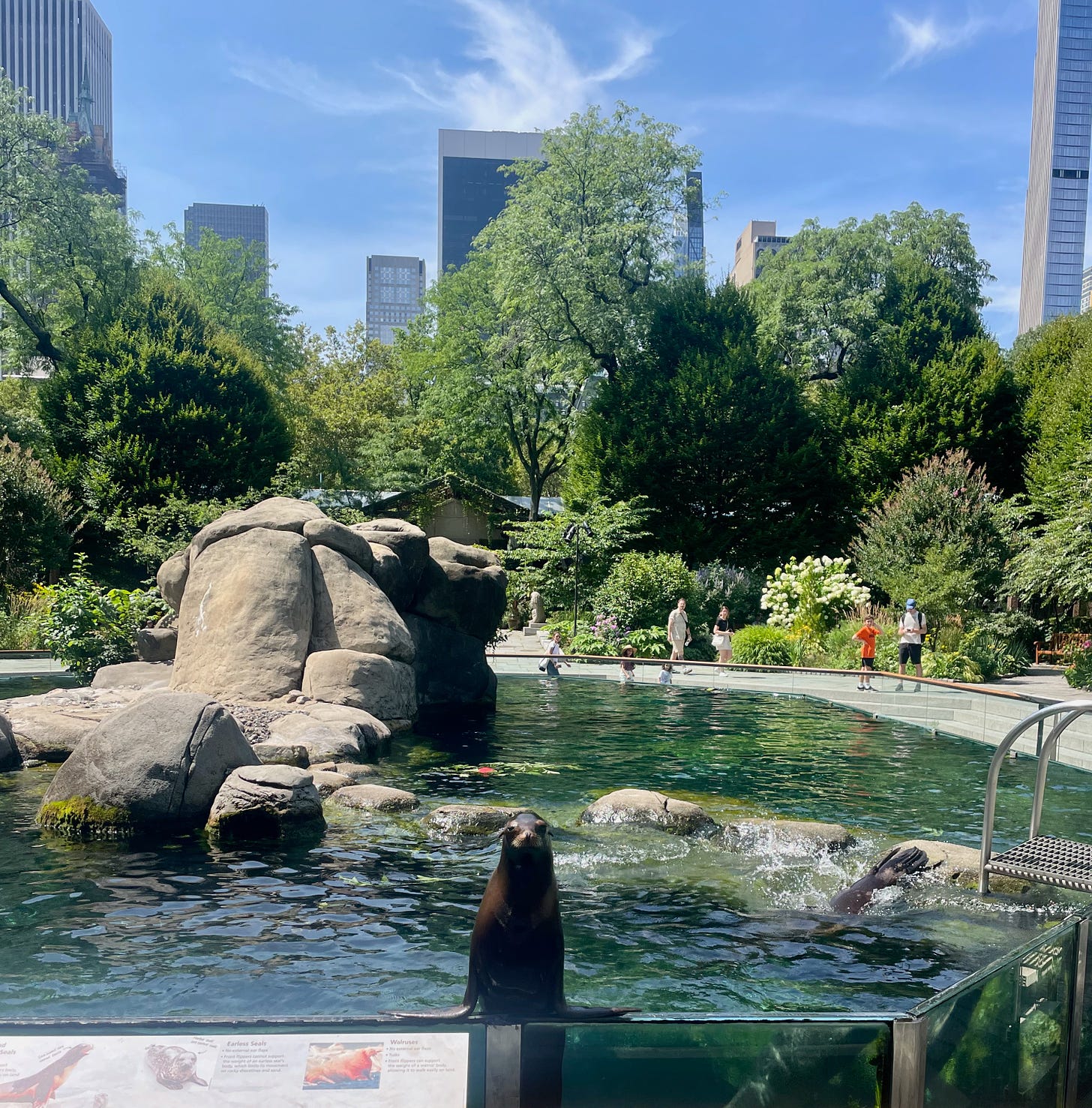
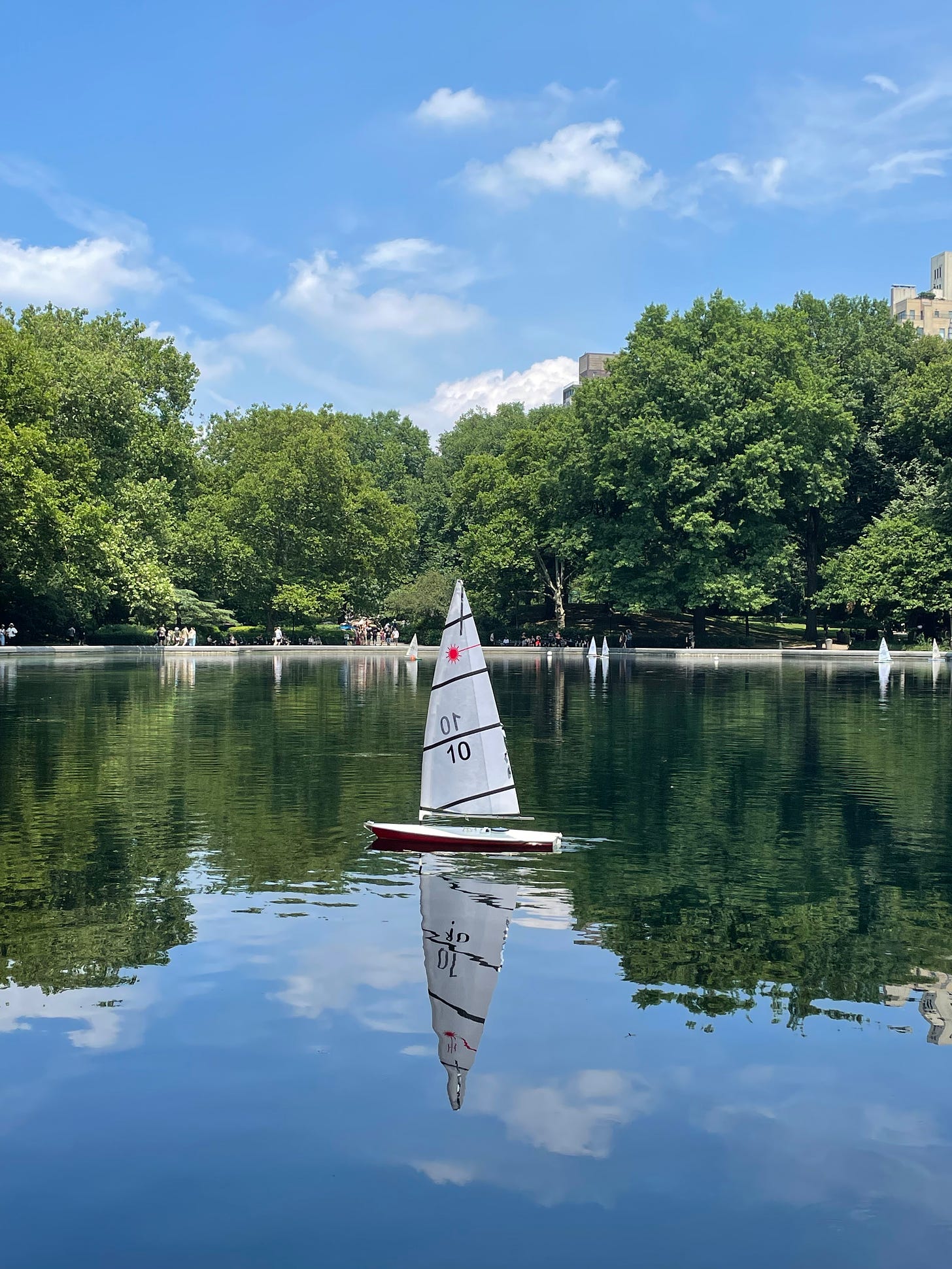
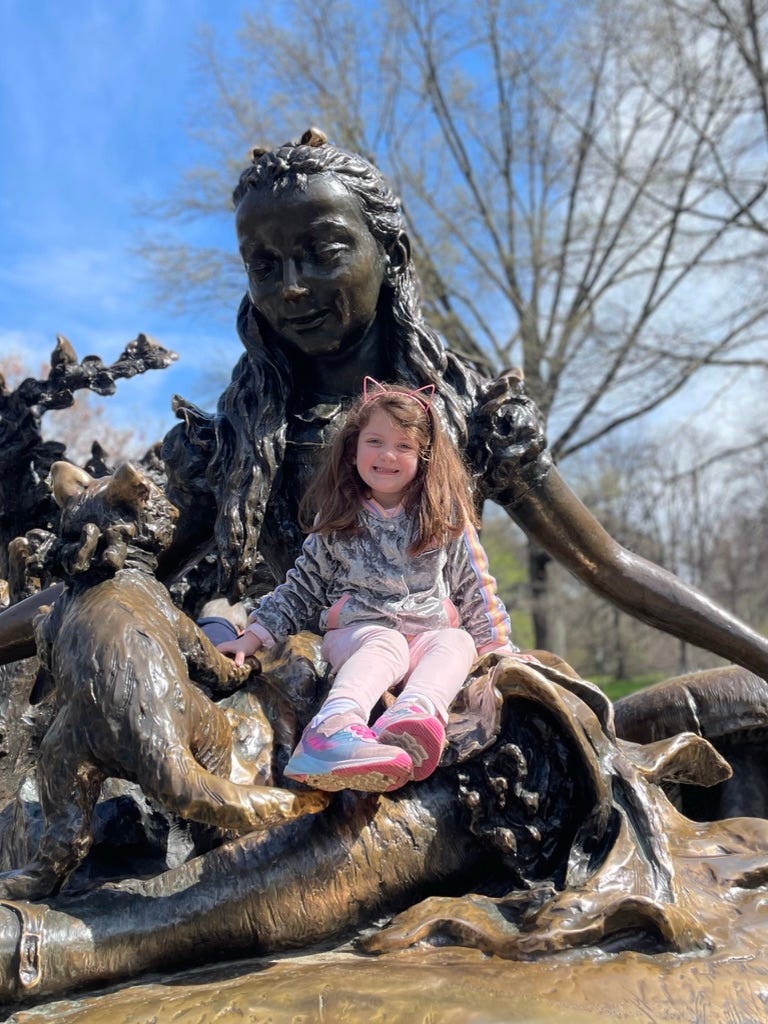
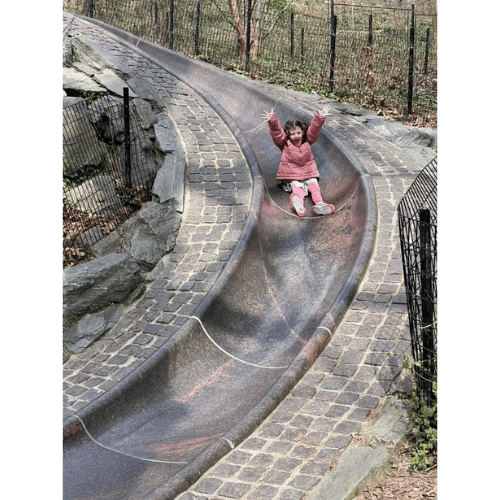
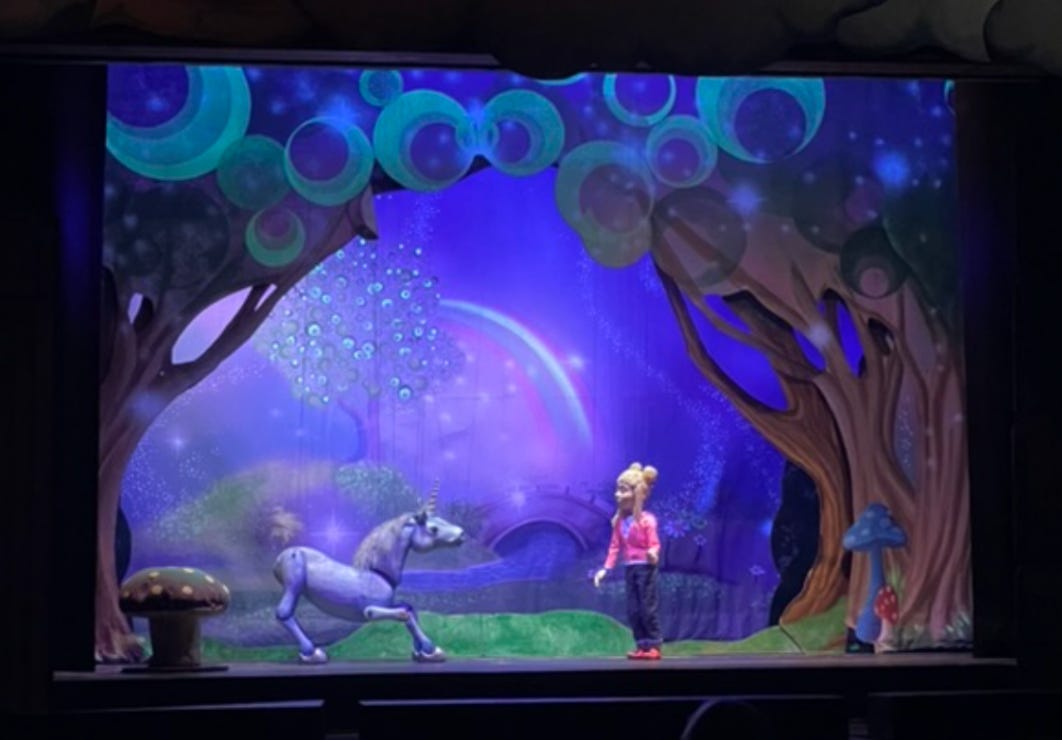
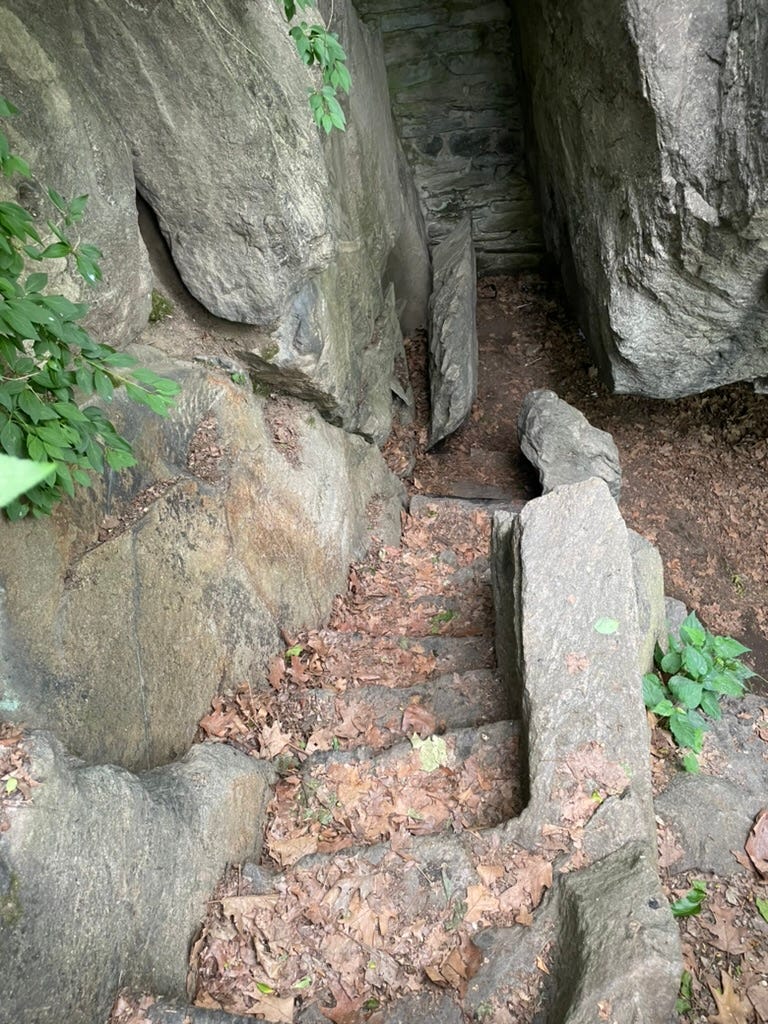


Oh, the wonders of wonderful Central Park. Thank you for this virtual tour and for your lovely words. It brings me back to great memories of a magical and quiet oasis in the center of a bustling and loud New York City. For several years, I worked not far from this beautiful park, and I would often walk during my lunch hour to find peace and replenishment...as I just virtually did on this Sunday morning.
Really terrific. And we're already big Central Park fans and walkers!